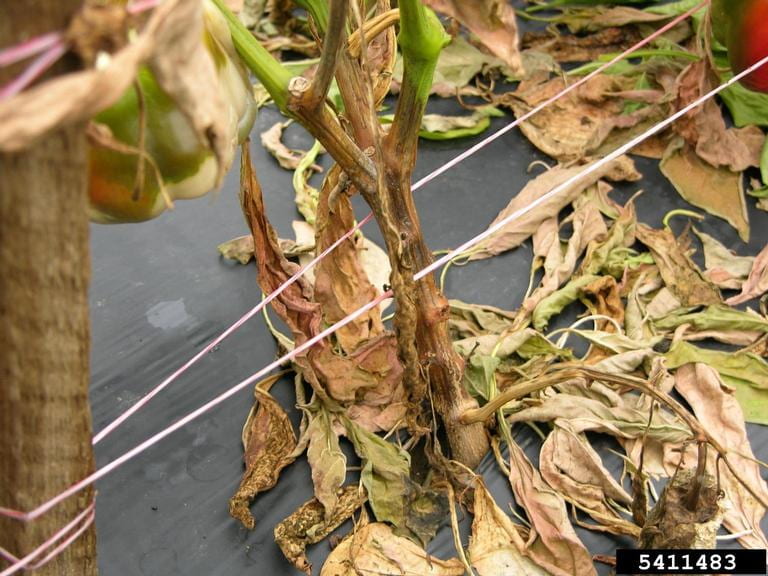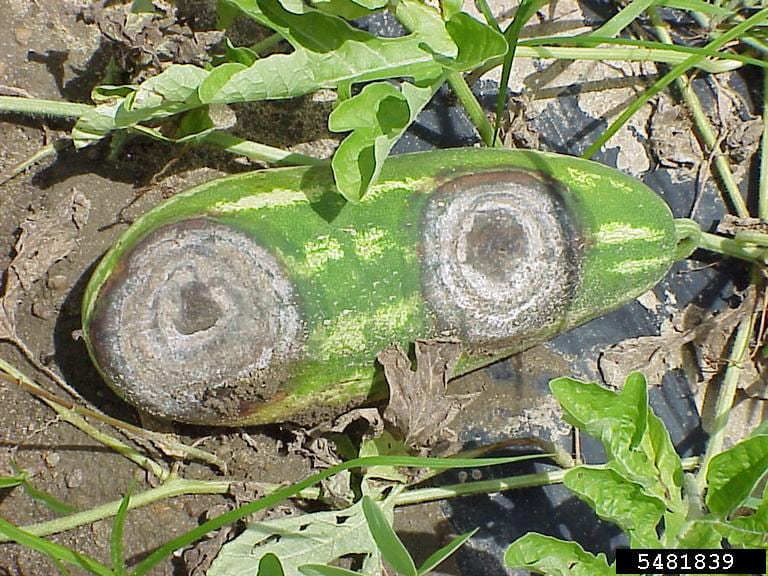Written by Neith Little, Urban Agriculture Extension Agent
Reviewed by Dr. Gerald Brust, IPM Vegetable Specialist and Andrew Kness, Agriculture Extension Agent
Phytophthora blight plagues peppers and melons
The hot wet weather this summer has been the perfect conditions for Phytophthora blight of vegetables. I know of at least one urban farm where this vegetable disease has been confirmed by the University of Maryland Plant Diagnostic Lab.
Vegetables in the squash family and the tomato/pepper/eggplant family are particularly prone to infection with Phytophthora blight. This disease is particularly destructive and difficult to manage.
What symptoms to watch for: Watch for suddenly wilting plants in wet fields or beds, with brown plant stems at the soil surface and soft, rotting fruit.


How to manage the disease
- Confirm your diagnosis: If you suspect you have Phytophthora blight, seek help confirming the diagnosis.
-
- Gardeners: Upload photos to Ask Extension: https://go.umd.edu/askextension
- Farmers: Submit a sample to UMD’s Plant Diagnostic Lab: https://go.umd.edu/plantlab
- Protect your healthy beds. Avoid tracking soil from an infected bed into a clean area. Clean harvesting and weeding tools well.
- Promote good drainage. Avoid overwatering, use raised beds where possible.
- Plant disease-resistant varieties. Here is a list of phytophthora-resistant pepper varieties: https://go.umd.edu/peppervarieties
- Remove infected plants. Put them in the trash or bury them far from your growing area. Do not put in compost that will go back onto the farm.
- Rotate crops. In a bed where you have had Phytophthora, avoid cucurbit crops and solanaceous crops for the next three years.
- Chemical management can be used in conjunction with the above practices. Several fungicides are labeled for Phytophthora blight on vegetable crops. Consult the Mid-Atlantic Commercial Vegetable Recommendation Guide for a list of products and application methods. Always read and follow the label prior to any pesticide applications.
Citations and additional reading:
- Grabowski, M. (2018). Phytophthora blight. University of Minnesota Extension. https://extension.umn.edu/diseases/phytophthora-blight
- Koike, S. T., Gladders, P., & Paulus, A. O. (2007). Vegetable Diseases: A Color Handbook. Taylor & Francis. pp. 206-208 and pp. 243-244.
- McGrath, M. T. (n.d.). Pepper varieties resistant to Phytophthora blight and bacterial spot. Cornell University Cooperative Extension Vegetables. https://www.vegetables.cornell.edu/pest-management/disease-factsheets/disease-resistant-vegetable-varieties/pepper-varieties-resistant-to-phytophthora-blight-and-bacterial-leaf-spot/
- Scheufele, S., & Higgins, G. (2016). Phytophthora blight. University of Massachusetts Amherst Extension Vegetable Program. https://ag.umass.edu/vegetable/fact-sheets/phytophthora-blight
- Sudermann, M. (n.d.). Phytophthora blight. Cornell University Cooperative Extension Vegetables. https://www.vegetables.cornell.edu/pest-management/disease-factsheets/phytophthora-blight/
- Wyenandt, A., Vuuren, M. van, Kuhar, T., Hamilton, G., Hastings, P., VanGessel, M., & Johnson, G. (2020). Mid-Atlantic Commercial Vegetable Production Recommendations. https://njaes.rutgers.edu/pubs/publication.php?pid=e001